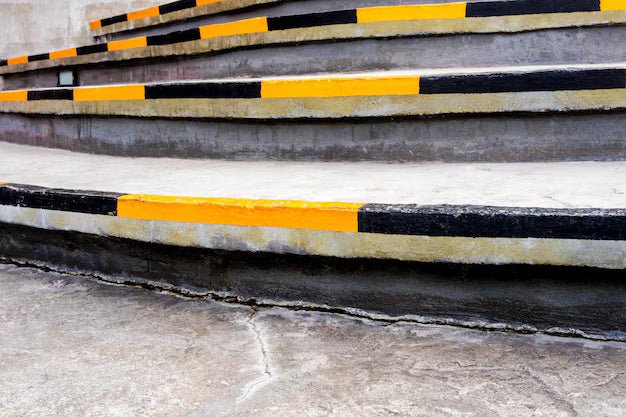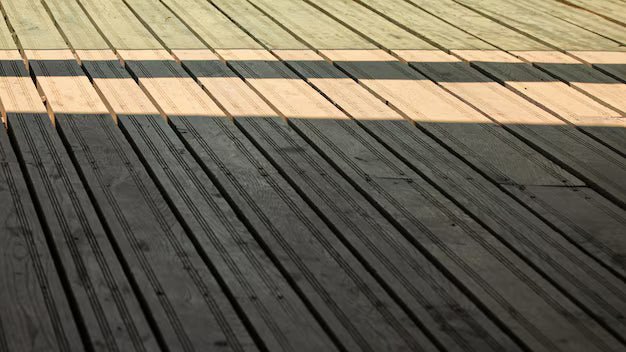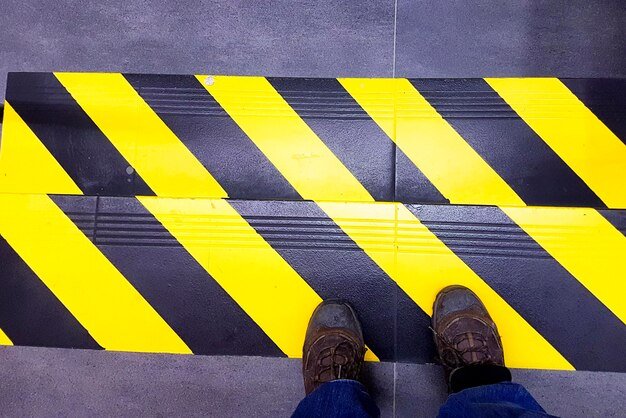British winters are rarely simple. They stretch on for months, bring a mix of rain, sleet, and occasional snow, and often feel darker and colder than we remember. Everything outdoors takes a bit of a hit during this season. Paths stay wetter, steps turn slick, and walking across outdoor surfaces starts to feel a little less predictable.
This is where non skid tape comes in. It’s designed to improve grip underfoot and can be applied to steps, ramps, decking, and other areas where slipping is a concern. But with so much moisture and freezing air in winter, many people wonder if it holds up long enough to do its job. Is non skid tape reliable through the cold, wet months ahead? As the season shifts, it’s a good time to take a closer look.
What Makes British Winters So Tough on Surfaces
Winter in the UK doesn’t just change the way things look, it changes how everything feels under your feet. Wet leaves stick to paths, icy mornings freeze water in hidden spots, and a long afternoon of rain can soak through surfaces that once felt dry and sturdy.
• Persistent rain keeps timber decking, concrete steps, and metal walkways damp for longer stretches
• Frost and overnight freezes can cause materials to expand and contract, which weakens surface bonds
• Shaded areas often stay wet into the early afternoon, giving little time to dry out or warm up
Outdoor surfaces work harder in winter. Footpaths that never get sunlight can grow slippery with little warning. Ramps near garden gates or outdoor storage may not dry properly all season. Even a simple step down from the kitchen or shed can become risky when there's no firm grip underfoot.
As the season progresses, the continued cycle of rain, freeze, and thaw causes many outdoor materials to weaken over time. After weeks of damp weather, moss and algae can build up on walkways, adding even more slipperiness to already risky surfaces. It’s not unusual for a surface that felt safe in October to turn tricky by December.
How Non Skid Tape Holds Up in Cold and Wet Weather
Non skid tape is made to reduce slipping risks, but not all tape is the same. The weather plays a role, but so does the quality, how it's installed, and where it's used.
• Many grip tapes are designed to resist low temperatures and water exposure
• Strong adhesive backing helps hold tape flat, even when cold air tries to shrink or warp it
• Surface preparation (cleaning, drying, and installing properly) matters just as much as weather resistance
If the tape is applied in dry, cool conditions and sticks firmly from the start, it’s more likely to stay put through long stretches of winter. That said, if it’s set down on damp surfaces, or isn't pressed down completely, moisture can creep in and speed up wear. The tape might lift, curl, or shift over time, especially with the extra freeze-thaw cycles that come in late autumn and early January.
We see the best results when grip tape is matched to its job. A long ramp in constant rain may need something stronger than a strip near the front doorstep. Getting the right tape helps it last longer through rough seasons.
Slips Away offers non skid tape with durable resin grit, waterproof adhesive, and a range of widths for steps, ramps, decking, and more. These tapes are designed for outdoor use and specifically to withstand tough British weather. Their backing resists peeling, and the textured surface provides traction that remains dependable through rain, frost, and regular foot traffic.
If the environment is especially hard on surfaces, choosing a tape rated for extra durability can help. Some tapes feature thicker grit for heavy use or extra-strong glue to tackle moist and shaded spots. Keeping tape edges sealed and free from dirt or leaves also helps keep water from seeping beneath.
Common Signs Your Grip Tape Isn’t Holding Up
Winter has a way of showing weaknesses in small bits first. Many people don’t notice until they step on a patch that feels off or sees someone slip because the surface didn’t hold like it used to. Keep an eye out for signs that the tape isn’t doing its job as well anymore.
• The edges of the strip lift or peel, especially after heavy rain or overnight freezes
• The grip has worn smooth, losing its sandpaper-like feel underfoot
• Tape doesn’t sit flat anymore and lets water pool underneath
Once tape begins to curl or shift, it rarely gets better on its own. Cold weather can turn a loose corner into a full strip failure within a few days. It’s worth checking key areas now, before winter deepens and the chance to fix the issue gets lost in days of steady rain or icy mornings.
Paying close attention to high-traffic spots, such as the first and last steps, or the main stretch of a ramp, can often reveal trouble before it becomes a hazard. Where there’s more wear, tape usually needs replacing sooner.
When It's Time to Replace Non Skid Tape
There comes a point where a strip, no matter how well it was once placed, simply can’t do what it’s meant to anymore. Recognising that early can prevent falls and further surface damage that might cost more to fix by spring.
• If tape feels weak under your feet or slides under pressure, it’s not safe
• Repeated stretches of freezing and thawing can loosen the adhesive beyond repair
• Visible rips, holes, or patches of worn grit are signs it’s time to replace before damage spreads
Old strips can let water sit between the tape and the step, which speeds up surface wear underneath. It might seem like a small thing to ignore a curling corner or thin patch, but as more rain hits and frost settles in, that small issue can turn into something much harder to sort out on a cold, wet afternoon.
When making repairs, it’s best to clean the area well, let it dry out completely, and pick tape that matches the surface and level of use. Doing these things provides the tape with the best chance to stick and last through the rest of winter.
Make sure to lift any old tape fully before putting down a new strip. Bits that are left behind can keep the new tape from sticking the way it should. Taking a little more time for a smooth, dry surface makes a difference in how long the tape will hold.
Make Winter Walking Safer Without Guesswork
British winter asks a lot from outdoor surfaces. Constant damp, surprise freezes, and fewer dry days make even good materials work harder. Non skid tape can help, but only if it sticks right, stays put, and holds up to the cold.
Keep an eye out for early signs of wear. If your steps feel slick or strips feel loose, don't wait too long before checking more closely. Grip tape is meant to help us stay steady when the ground isn’t. And when it starts to give out, so does peace of mind.
Making a few changes before things get worse often means safer steps and fewer worries every time you head outside this winter. Preparing now helps make sure your walkways stay sure-footed through the months when traction matters most.
When you've spotted wear or looseness on old strips, now's the time to sort it before winter deepens. At Slips Away, we take surface safety seriously, especially during months where grip can fade fast. For outdoor spaces that stay wet or get icy, using the right kind of non skid tape makes all the difference in keeping walkways safer. Let's make sure your surfaces stay steady, even when the weather isn't. Give us a ring if you need help choosing the right option or need advice on where to start.














